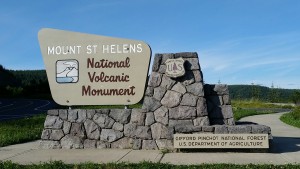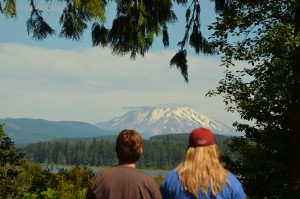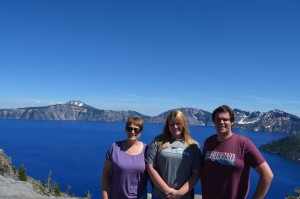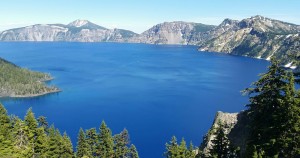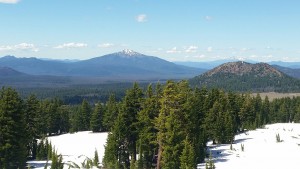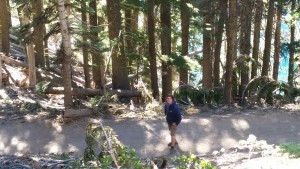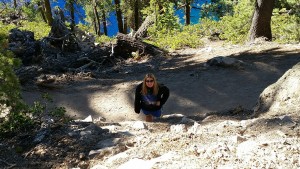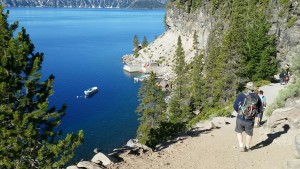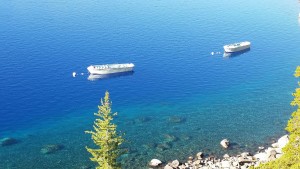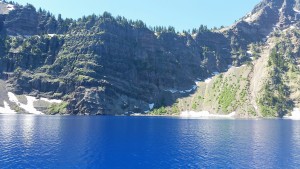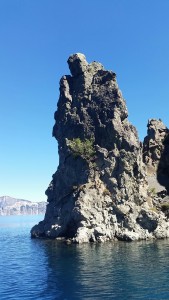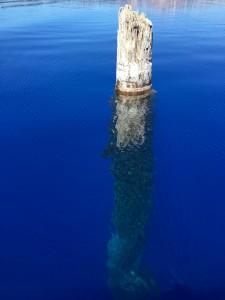In late March of 1980, scientists recorded a 4.2 magnitude earthquake deep below Mount St Helens, in the Cascade Mountains in Washington State. Seismic activity continued to grow over the next six weeks. Then, at 8:32 am on May 18th, the mountain could no longer hold back the inside pressure, and the most destructive U.S. volcano had begun to erupt.
Over the next 9 hours, the eruption created clouds of superheated gas and rock debris blown out of the mountain face moving at nearly supersonic speeds. The ash clouds reached 15 miles (80,000 feet) into the atmosphere and deposited ash in 11 states. Day was turned into night. The initial blast wiped-out everything instantly within 8 miles, and the shockwave that immediately followed leveled every tree in the surrounding forest for another 19 miles. The total area shattered by the blast was an astonishing 230 square miles! Sadly, 57 people lost their lives that day, and the economic losses were estimated to be 1.1 billion dollars. Before its eruption, Mount St Helens was the 5th largest mountain in Washington, at 9,677 feet. After the eruption, it lost about 1,300 feet in height-now standing at 8,365 feet in elevation.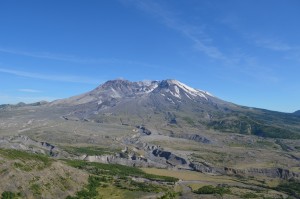
It’s been 36 years since the eruption of Mount St Helens, but as we drove the winding road to the Johnson Ridge Visitors Center for a closer look at the volcano, the devastation was still clearly evident all around us. Seared dead timber still stands on the surrounding ridges and vegetation is just starting to return to the slopes of this massive mountain. We pass by a large, gray-looking river valley, a mile wide and full of debris, rocks and dried mud. It was one of the most eerie, but unique landscapes, we’ve ever seen. Knowing the tragedy that happened to the people who lost their lives that day, it was also one of the most somber.
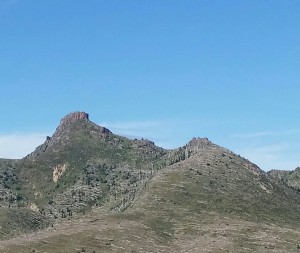 Today, the USGS (United States Geological Survey) continue to monitor the volcano for earthquakes, swelling and gas emissions. Volcanologists believe it’s not a matter of IF it will erupt again, but simply WHEN.
Today, the USGS (United States Geological Survey) continue to monitor the volcano for earthquakes, swelling and gas emissions. Volcanologists believe it’s not a matter of IF it will erupt again, but simply WHEN.
BEAUTIFUL BLUE CRATER
Approximately 350 miles south of Mount St Helens, in the southern Cascades of Oregon, is the remains of another massive volcano, called Mount Mazama. Never heard of it? That’s OK, probably the millions of people who have visited this site never have either. Now it’s called Crater Lake. That’s because the eruption of Mount Mazama occurred about 7,700 years ago and was so violent it triggered the complete collapse upon itself, creating what’s called a caldera. It simply dropped into the earth. What it left was a crater, 6 miles wide and 2,150 feet to the top of the rim. Many people think that Crater Lake was formed by the impact of a large meteor! In the crater, a lake formed from rain and melted snow. Today, precipitation is still the only source of water into the lake. There is no inlet or outlet to the lake. It averages about 66 inches of rain each year and about 533 inches (44 feet) of snowfall. The water in the lake is so blue and clear it almost looks unreal. You can actually see down almost 100 feet. Crater Lake is 1,943 feet deep. That makes it the deepest lake in the United States, and the ninth deepest lake in the world! Crater Lake became a National Park in 1902.
Back in the spring we had made reservations to take a boat ride down in the lake. This was a rare treat since they only run them for a short time each year and they sell out very quickly. There was only one small catch, you had to hike down to the lake from the north rim, about 1.5 miles. No problem we thought, we’ve been hiking at various parks for 10 days. The trail down was wide and well maintained, with many switchbacks. Both Tyler and Darby had gone out in front of Theresa and I, like they normally did-our pace was a bit more leisurely. The Ranger-led boat ride was great-very educational with fantastic views of the crater from down in the lake. It was when we returned to shore, we that we got a reality check. We had to walk back up the same steep, winding trail we snickered at on the way down. I was sure the 1.5 mile route we took down had somehow turned into a hot, brutal 5-mile hike back out! I was gasping, grunting and had run out of water. It reminded me of a Looney Tunes cartoon, as I stopped to rest on the edge of a high drop-off and was half waiting to see a roadrunner standing there watching me blow myself up with an ACME rocket, or a large anvil come falling out of the sky on to my head!
Hiking the 1.5 mile trail down into the crater for our boat ride on Crater Lake
A rock formation called the Phantom Ship sticks out of Crater Lake, while a 50′ dead tree that’s been bobbing in the clear, blue water, floats on by.
Whether a volcano still towers above the surrounding land, or leaves a large crater in the earth’s crust, nothing can stop nature’s power that rises up from below! Stay Tuned!
